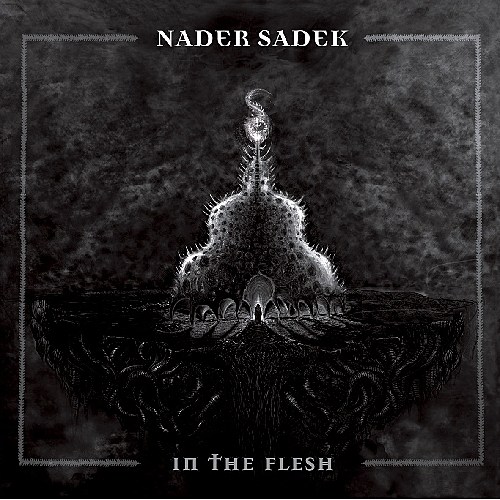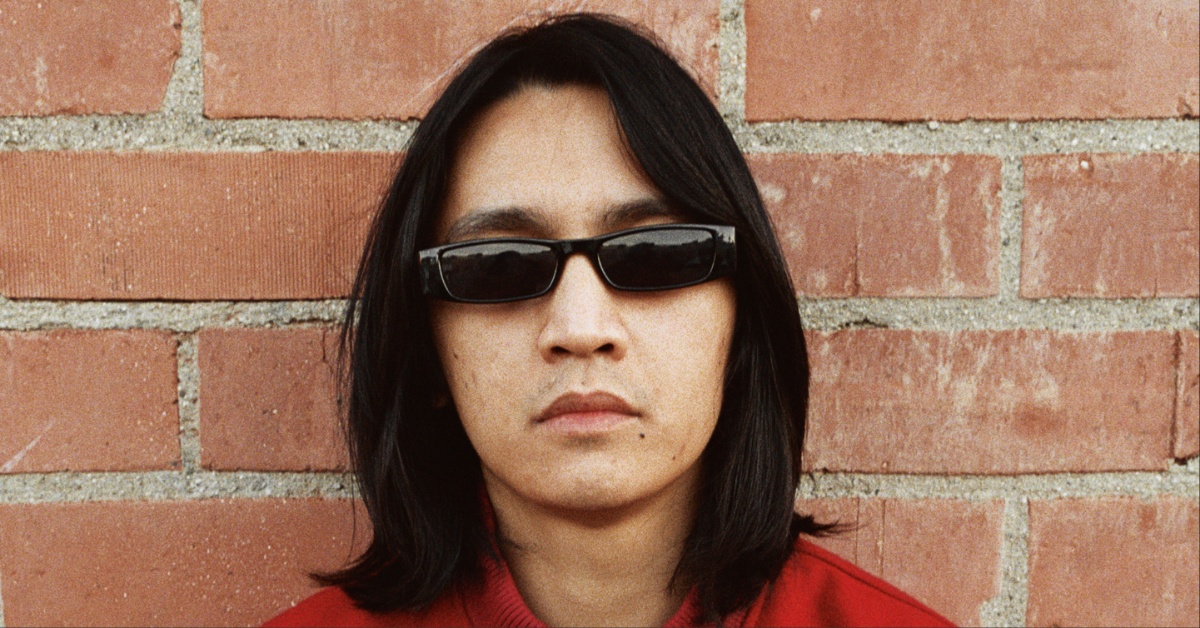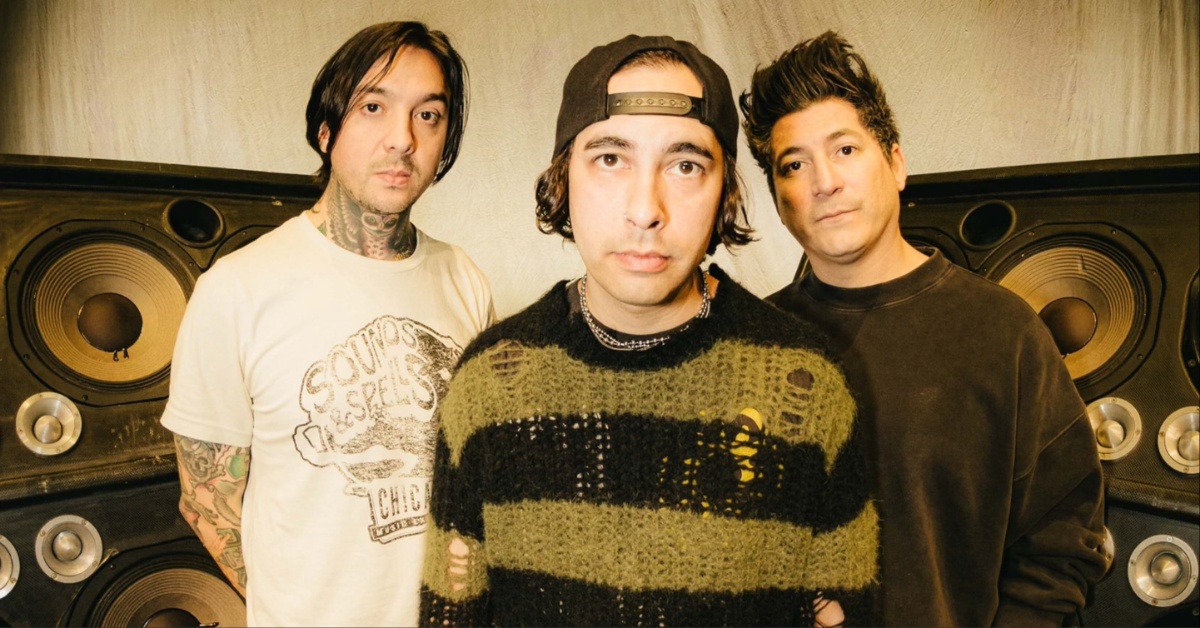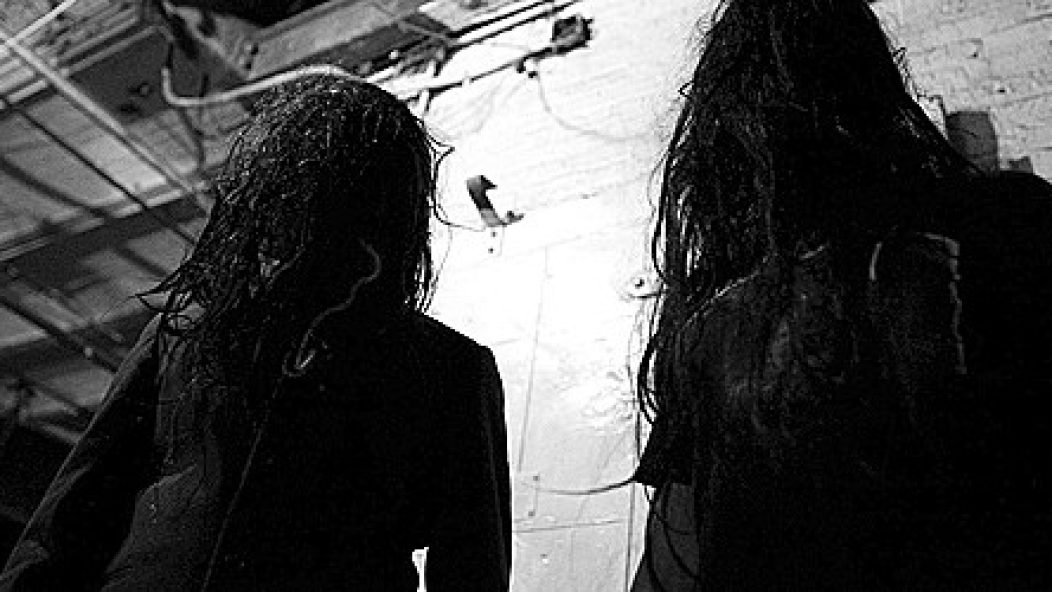
Interview: Nader Sadek
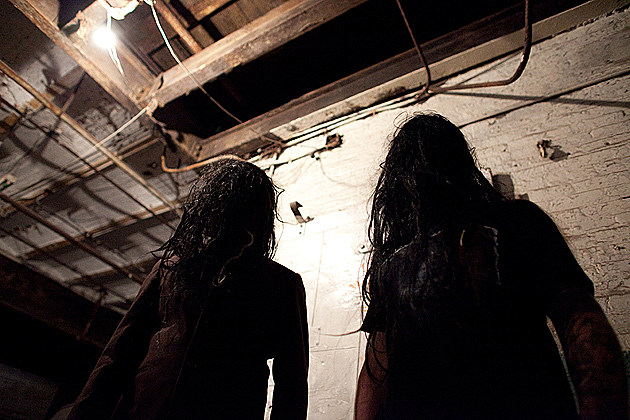
. . .
Nader Sadek is new to our ears, but he has been with us for some time. His sculptures and masks have been used onstage by Mayhem and Sunn 0))).
This year he released his first album, In the Flesh. His band is a notable collection of heavy-hitters: Steve Tucker, Flo Mounier, and Rune Eriksen. Guest artists Attila Csihar, Travis Ryan, Tony Norman, Mike Lerner, Nick McMaster, and Destructhor helped Sadek bring his distinctive vision to life.
In the Flesh is incredibly ambitious, but according to Sadek in the following interview, the album is just the beginning.
. . .
To the metal community, you’re better known as a visual artist. How did you decide to try being a musician?
I wouldn’t really describe it as such. If you look at all my work, you will see that there is a big change in medium for each one. Sure, it is mostly visual, sculpture, and installation-based, but my technique always changes. It’s not just an evolution; it’s a desire to create something different through different techniques and processes.
I had already worked with Steve Tucker on a project called Faceless back in 2006-7. It was just one song, which served as a soundtrack to a series of drawings.
I think of all that as one thing, so separating and categorizing them by medium seems to me too limiting. I truly want to explore most art forms, especially when it seems like it is the best way to approach and treat certain concepts.
For this project, it seemed perfect to make a unique-sounding metal album. The petroleum dependency theme has been present in all my work in one form or another, and I felt it was time to express it in a musical form, as before it was mostly based in sculpture.
But to answer your question more specifically, I’m not a musician and don’t think I could be. Although I did write some of the songs, I don’t believe that you have to be a musician to write a song. Writing a song and playing it are two completely different things. For example, you don’t have to be a sculptor to make a sculpture. So with courage I took it upon myself to write a few songs and riffs, which luckily turned out OK.
. . .
Are those two creative parts of you, the visual and the musical, related?
Yes, for me they are both artistic practices, one time-based and one space-based, and the fusion of them – video – is important, too. I don’t want to limit myself by separating them; the videos and artwork are very important pieces of the album. Eventually, the record will be re-released as a DVD after all videos are done.
And this actually was a big part of the process, to make all the art forms transcend and transform and inspire each other. Starting with the concept, then figuring out the best way to approach it – this part of the process was where I was also thinking about which musicians could come together and make the sound that I believe fits the concept best.
The next step was to explain it to the musicians and come up with the songs in demo form, which in turn inspired the evolution of the sketches for the cover art. The next step was directing the musical style, and making sure the parts I wanted emphasized and brought to the fore were there.
At the time of recording, I worked on the drawings simultaneously. I was making marks on the paper that went along with the many drum beats and guitar sounds that were being recorded, making sure that each line corresponded to a certain melody and/or rhythm. Once both the music and the corresponding drawings were complete, it was then time to use both of those as an inspiration for the videos.
. . .
. . .
So your debut album In the Flesh is a solo record, but the backing band you’ve assembled, with ex-members of Morbid Angel, Cryptopsy, and Mayhem (not to mention the more contemporary guest musicians), is sort of a supergroup. How did you assemble these musicians?
I don’t think of In the Flesh as a solo record. I’m not a musician, so I’m coming from a completely different angle with this. It was extremely important to find the right people for this project. My work is always a continuation of itself, and thus, there are recurring themes through it all. As a result, it seemed fitting that I would reference the first project I worked on with Steve, Faceless, which centered upon the socially marginalized’s perception by another culture – specifically, the juxtaposition of metal fans in Cairo and niqab-clad women in NY.
It was important to get someone whose place in the culture of metal was similar. To a certain extent, many metal fans did not accept Steve as a worthy replacement [for Morbid Angel frontman David Vincent], which I totally disagree with, as I think that he is a much more fitting vocalist than his predecessor. This, to me, put him in this peripheral sphere as an outsider or an outcast in some ways – which was one of many reasons I wanted to work specifically with him in the beginning.
I took this idea further when I thought of Rune and Flo. Rune is in an extremely similar situation as Steve, and Flo, due to the recent changes in his band’s sound, was also sort of put in that challenging situation. When I had that idea, I tried to imagine what this combination would sound like, and I immediately realized that it would sound perfect. Not because they are just great musicians, but because they have very unique signature sounds that are perfect to express the narrative. Steve’s writing has very thick, heavy rhythms, whereas I think of Rune’s style to be more melodic, in a sense. They both play with emotion, so already those two were a perfect fit. Flo’s attack resembles a tank, to me so already he is referencing the sounds of a petroleum-based engine pummeling through.
So for me the most important part was to make sure that Rune’s sounds and harmonies were emphasized and well-expressed on top of Steve’s songwriting. The result is exactly what I was hoping for, if not more; a hybrid of sounds that corresponded with the idea very well. It was a bonus for me in the end that the chemistry between the players was very charged and harmonious.
This contrast, I believe, also helped shape the sounds that the guests would contribute. The guests were recruited to add more flavors, to give the album a bigger and more cinematic feel, if you will. I believe as far as the soloing on this record, Mike Lerner laid down some of the most amazing solos, further emphasizing the feel I had envisioned and was hoping to construct. Mike made some of the chaotic moments in the record very melodic. The same goes for Travis Ryan’s vocals, which I think gave the music another dimension, making the contrasts more dynamic.
. . .
In the Flesh could be called a concept record focusing on man’s destructive relationship with oil. That issue is part of the world’s zeitgeist right now, but how does it affect you enough to incorporate it into a project?
Although I believe that all work is unavoidably political, I wanted to approach this from a different perspective. I don’t have any ecological message to preach. With this theme, I felt there were two options: to express it as highly political statement or a more philosophical/observant approach. I chose the latter. This is simply an exploration of the human condition as we now find it intermeshed with petroleum.
What I find exciting about this theme is that petroleum is a chemical compound made of dead animals and vegetation, which is converted into a spectrum of new products from energy to plastic. Humankind has put itself into a strange vicious circle: death is exhumed, abused, and productive of more death through environmental degradation and conflicts over owning and controlling this commodity. It’s as if the ghosts of petroleum are haunting us – not only have we exhumed the bodies of the dead, so to speak, but we use them to kill each other.
. . .
“Nigredo in Necromance”
. . .
So there will be a complete music video to accompany the album, not just the “Nigredo in Necromance” video. When should we expect that project, and will it be divided into tracks like the album, or will it flow continuously?
Probably in about a year or so, but it will contain a lot, also a live performance. This way people also see what the live show is like, which will also be another interpretation of the videos. I guess that’s the final setting where everything truly comes together – the live show. Many sculptures which will be in the videos will also be on stage, or a newer interpretation of some of the things that you’ve seen in the drawings.
It will be a pretty rounded performance. There were actually two shows before Rune was part of this. Then it was still called “Faceless”. One was at the Sculpture Center, an art museum in Long Island City in NYC, and the other one was at Santos Party House, also in NY. The Santos show, titled Ageless, is a pretty close vibe of what to expect at a live show, but much more dynamic.
As far how they are put together, yes there will be new sounds, new recordings, layers, and so the songs might even be in a different order. Already the two songs I’ve made videos for have intros that are not to be found on the album, not to mention a different mix as well. Whatever’s online I don’t think is really going to be the very final, either. I’m very excited by the thought of working on the rest of the videos.
. . .
While on the subject of the Nigredo video, did you think of the concept, with the buried woman and the flesh-guitar?
Yes, I wrote, directed, performed and made all the props. Bad Brilliance lit and shot it. We edited together. It started with a storyboard, and then I created an animatic to explain the concept and the shots to Bad Brilliance. I also found the location, which is just northern Manhattan here in NYC.
. . .
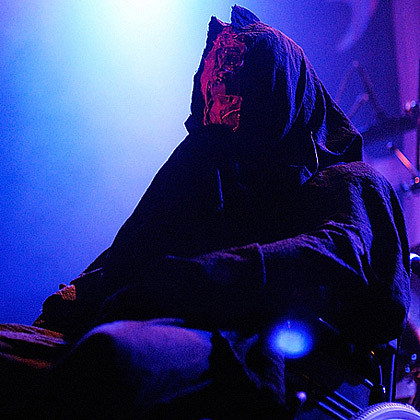
. . .
As an Egyptian native, how did you come to live in New York City and create installations in concert with the heavy metal underground?
Yes, it’s a strange story. I can honestly say I have no idea how I got here, but I’m very passionate about what I do, and I think that may have had an effect on it. I started doing shows in Cairo, after I had graduated from visual arts school in Minneapolis, where I got scholarships and loans to study. I returned to Egypt after living in the freezing colds of Minnesota, where I saw tons of death metal bands for the first time. It was quite a trip to see Deicide. I felt quite privileged, actually, and never took it for granted, so I went to pretty much any show.
Anyway, I returned to Egypt and had an art show, and then I decided that Egypt was way too limited, and that I couldn’t really make art that I wanted to express because everything there is watched, and you can’t be too provocative. Anyway, I decided to move to NYC and look for art and do play props, fabrication jobs. So I left and came to NYC. It took me a while to find the jobs I liked, and eventually I was asked to do a small show in an NYC gallery. I don’t remember how I got in touch with Steve, really, but I explained to him my ideas. He related to them, so we worked on a song.
Around that same time, I had also somehow bumped into Attila, and we started talking, and just from talking, he asked me to make a mask for him. I made one, and he really liked it, so he asked me to make more. Eventually, he asked me to do an entire stage design for the US tour, which of course was quite the undertaking. But I believe it was a success in most ways. In a way, I want to be a responsible metal fan and give back to what I grew up being inspired by. So I hope I’m doing that.
. . .
Mr. Sadek humbly asks that anyone interested in purchasing his record do so at this location.
. . .
